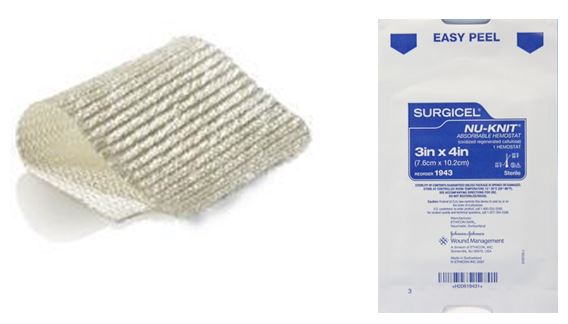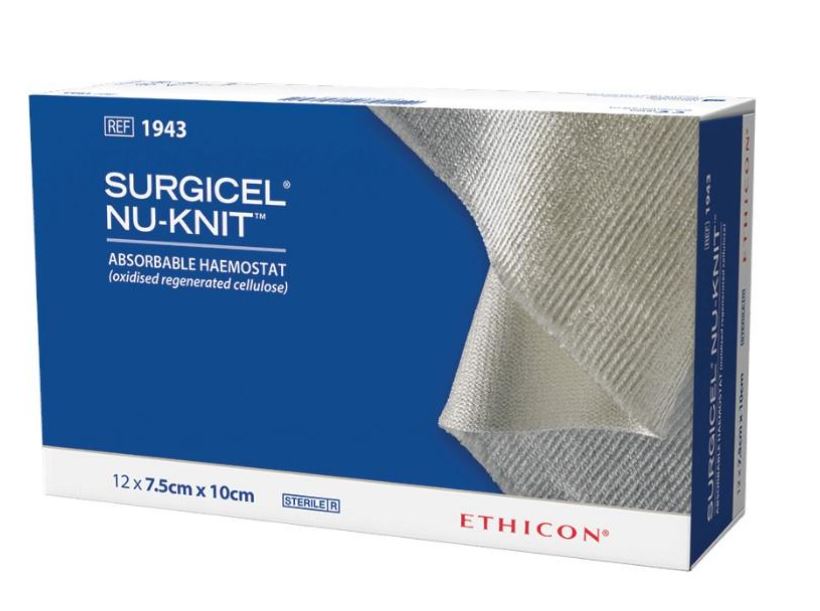HAEMOSTATIC ABSORBABLE COMPRESS, dense O(R)C, 7x10cm, ster.
Valid Article
ABSORBABLE HEMOSTATIC DRESSING, O(R)C
Definition
Sterile, bioabsorbable device derived from plant polysaccharides (e.g., cellulose, starch, agar derivative) intended to be applied to surgical and traumatic wounds to facilitate local haemostasis primarily through denaturation of blood proteins and/or adherence to blood platelets. It is applied directly to the wound where it remains to be absorbed by the body; it does not contain an antimicrobial agent.
Specifications
Cellulose is a homopolysaccharide produced by polymerization of glucopyranose through β-glucosidic bonds. Oxidized cellulose can be either regenerated (ORC, organized fibers are formed before oxidation) or non-regenerated (ONRC, with unorganized fibers prior to oxidation).
Oxidized cellulose is known for its ease of use, favorable biocompatibility, and bactericidal properties.
Quality Standards Comment
USP Monographs: Oxidized Regenerated Cellulose
Technical specifications
- material: ORC = oxidised regenerated cellulose or ONRC = oxidised non regenerated cellulose
- fibers in a dense knitted mat
- flexible and can be cut without fraying and folded to conform to irregular surfaces
- does not stick to instruments
- easy (re)positioning at the bleeding site
- no memory effect
- absorbable
- sterile, for single use
- size: 7 - 7.5 x 10 cm
Packaging & Labelling
Each dressing is packed in a disposable peel pack allowing effective sterilization, safe handling, and storage of all pouched items until needed for use and facilitating proper aseptic presentation of the material.
Instructions for use
Precautions for Use
- To avoid complications, it should not be closed in a contaminated wound without drainage.
- When oxidized cellulose is used in proximity to nerve structure in areas of bony confinement (e.g., foramina, spinal cord, optic chiasma), it may lead to nerve damage.
- The use of oxidized cellulose-based topical haemostats is not indicated to control biliary, urinary, pancreatic, and air leakages.
Storage
- storage temperature: 15 - 30°C
- Protect from sunlight ‐ Protect from humidity
MSF requirements
To be used in head trauma as an adjunct to ligation or other conventional methods to control capillary, venous, and small arterial haemorrhage.









